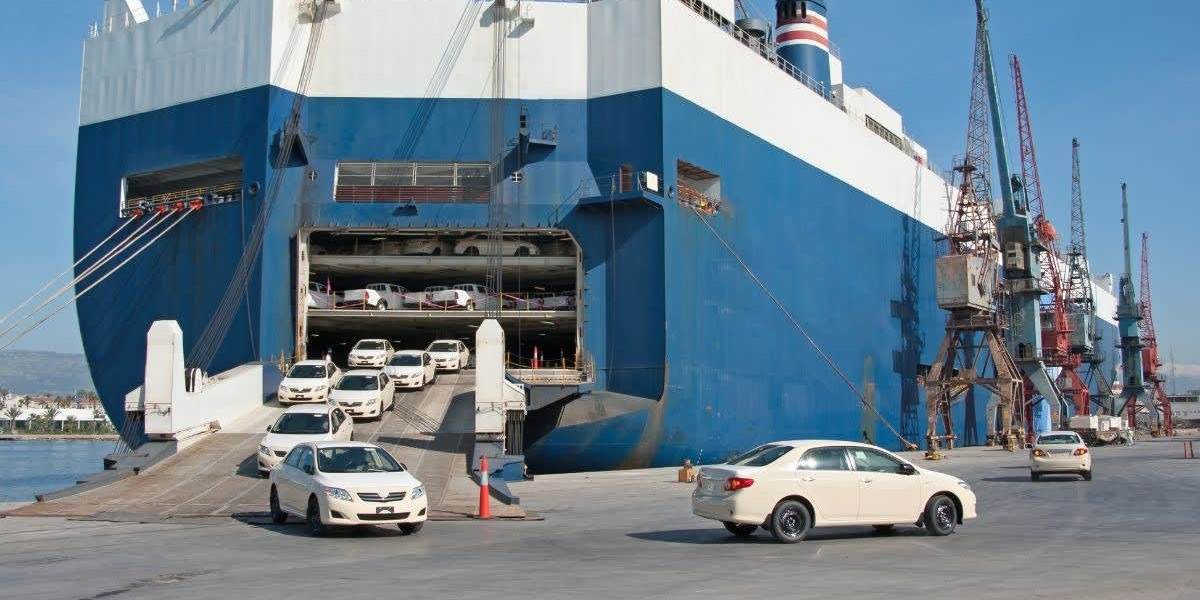Imagine your car cruising down the German Autobahn, parked along the French Riviera, or navigating the bustling streets of Tokyo. For an increasing number of people, this isn't just a daydream—it's a reality made possible by international car shipping. This complex yet fascinating process transforms your vehicle from a local commuter into a global traveler, crossing oceans and continents to reunite with you in a new land.
The decision to ship a car internationally represents more than just logistics—it's about maintaining a piece of home in a foreign country, whether you're relocating for work, retiring abroad, or bringing back a unique automotive find. This journey bridges continents and cultures, ensuring your trusted vehicle can continue being part of your story, no matter where life takes you.
Understanding the Voyage: Methods of International Car Transport
When it comes to international car shipping your vehicle has two primary travel options, each with distinct advantages depending on your needs and your car's value.
The most common method is Roll-on/Roll-off (RORO) shipping, where your vehicle is driven onto a specialized vessel under its own power, securely parked with other vehicles, and driven off at the destination port. Think of it as a massive floating parking garage crossing the ocean. This method is particularly efficient for standard, operational vehicles and represents the most straightforward approach to international vehicle relocation.
For those seeking maximum protection, container shipping offers a fortified solution. Your vehicle is carefully loaded into a standard steel shipping container, providing complete protection from the elements and external damage. This method comes in two variations: sole-use container, where your vehicle enjoys a private, sealed environment for its journey, and consolidated container, where multiple vehicles share space in the same container headed to the same destination. Container shipping is essential for classic, luxury, or exotic vehicles where even minor damage would be significant.
The Global Roadmap: Navigating International Shipping Procedures
Successfully shipping a vehicle internationally requires careful navigation through several crucial stages, each demanding attention to detail and proper documentation.
The journey begins with comprehensive documentation preparation. This includes having the original vehicle title, a valid bill of lading (serving as both receipt and contract), insurance documents, and copies of your passport. Perhaps most importantly, you'll need to research and comply with the destination country's import regulations, which vary significantly worldwide. Some nations have strict age restrictions on imported vehicles, others require specific emissions or safety standards, and many have complex duty and tax structures.
Once documentation is in order, your vehicle undergoes thorough preparation for its journey. This includes a complete cleaning—both interior and exterior—which isn't just for appearance but is crucial for agricultural inspections at many borders. All personal items must be removed, as they're not covered by shipping insurance and can complicate customs clearance. The fuel tank should contain no more than a quarter tank, and the battery should be fully charged to allow for driving on and off vessels.
The actual transit involves multiple stages: initial transport to the departure port, oceanic crossing, customs clearance at the destination country, and final delivery to your specified location. Throughout this process, maintaining communication and tracking your vehicle's progress provides peace of mind during what can be a lengthy journey.
Clearing Customs: Understanding Import Regulations
One of the most complex aspects of international car shipping is navigating the customs clearance process. Every country maintains unique requirements for imported vehicles, and understanding these regulations beforehand is crucial to avoiding delays, fines, or even refusal of entry.
Many countries require specific modifications to meet local safety and emissions standards. Some nations prohibit the import of right-hand drive vehicles, while others have strict regulations about vehicle age or condition. Certain countries may require additional inspections or certifications before allowing a foreign vehicle on their roads.
The financial aspect is equally important to understand. Import duties, value-added taxes, and other fees vary significantly between countries and are typically based on your vehicle's age, value, and engine size. Some countries offer exemptions for personal vehicles during relocations, while others provide reduced rates for certain types of vehicles.
Preparation Checklist: Getting Your Vehicle Journey-Ready
Proper preparation transforms a potentially stressful experience into a smooth, predictable process. Beyond documentation and cleaning, several practical steps ensure your vehicle arrives in optimal condition.
Start with a mechanical inspection, checking for any fluid leaks and ensuring tires are properly inflated. Disable any alarm systems or provide detailed instructions to the shipping company. Document your vehicle's condition with photographs from every angle, providing visual evidence of its pre-shipment state. Consider taking timestamped videos that clearly show the odometer reading and overall condition.
Remove all aftermarket accessories that aren't permanently attached, such as GPS units, custom stereo systems, or roof racks. Ensure your registration and insurance documents are current and easily accessible. If you're shipping a hybrid or electric vehicle, research any special requirements for battery charging or transportation.
Beyond the Horizon: The Arrival and Adaptation
The moment your vehicle clears customs and arrives at its destination marks the culmination of the shipping process, but several important steps remain to ensure a successful transition.
Upon arrival, conduct a thorough inspection comparing the vehicle's condition to your pre-shipment documentation and photographs. Check for any new damage or issues that may have occurred during transit. Address any discrepancies immediately with the shipping company according to your agreed-upon procedures.
Once reunited with your vehicle, you'll need to navigate local registration and licensing requirements. This typically involves presenting your import documentation, proof of ownership, and sometimes undergoing additional inspections to ensure compliance with local vehicle standards. Many countries require specific insurance coverage before allowing the vehicle on their roads.
Consider any adjustments your vehicle might need for its new environment. This could include headlight adjustments for right or left-hand driving, modifications to meet local emissions standards, or even mechanical changes to handle different climate conditions or fuel qualities.
The Global Drive Awaits
International car shipping represents the ultimate expression of automotive mobility—the ability to take your personal transportation anywhere in the world. While the process involves multiple steps and careful planning, the reward is having your trusted vehicle with you as you explore new countries and cultures.
This journey transcends mere vehicle relocation; it's about maintaining continuity in a changing world, preserving the comfort and familiarity of your own car amidst foreign surroundings. Whether you're embarking on an international assignment, fulfilling a dream of living abroad, or returning home after years overseas, international car shipping provides the vital link that keeps you connected to the vehicle that's been part of your life's journey.
The road doesn't end at the water's edge—it continues across oceans, through customs, and into new territories, waiting for you to take the wheel and continue your adventure in a new land, with the familiar comfort of your own vehicle beside you.








